









Alumasc is a UK-based supplier of premium building products. The majority of the group’s business is in the area of sustainable building products which enable customers to manage energy and water use in the built environment.
Alumasc Water Management Solutions provide ‘Rain to Drain’ solutions, that set the standard for urban water management. They include: Skyline Fascias, Soffit & Copings; Alumasc Rainwater Gutters & Downpipes; Harmer Building Drainage; Wade Building Drainage and Gatic Drainage & Engineered Access Covers.
Under the AWMS banner, customers benefit from rainwater and drainage products that capture, retain and control the flow of rainwater in the most effective way inside and outside buildings.
BS EN 1433 and CE marking
Products of the types and sizes stated in this catalogue have third party certification of conformance to BS EN 1433 and are supplied with marking to indicate this, plus a CE mark.
Wade can also supply products of different types and sizes to suit customer requirements, which when subjected to the same tests, may be found also to conform to BS EN 1433, but these will bear the CE mark. Such products must be tested before being placed on the market.


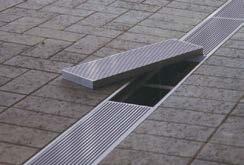
Custom made gratings
Cast iron grating and show edge coupled with stainless steel channel provided a complete drainage solution to blend with the period architecture at Somerset House, City of Westminster.
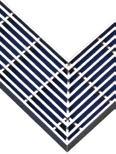
SS3080AC Mitred ‘Streamline’ grating ( Patent No. GB 2496199).
Floral style gratings of nickel bronze.

Stainless steel channel with Streamline stainless steel grating All England Lawn Tennis and Croquet Club, Wimbledon.


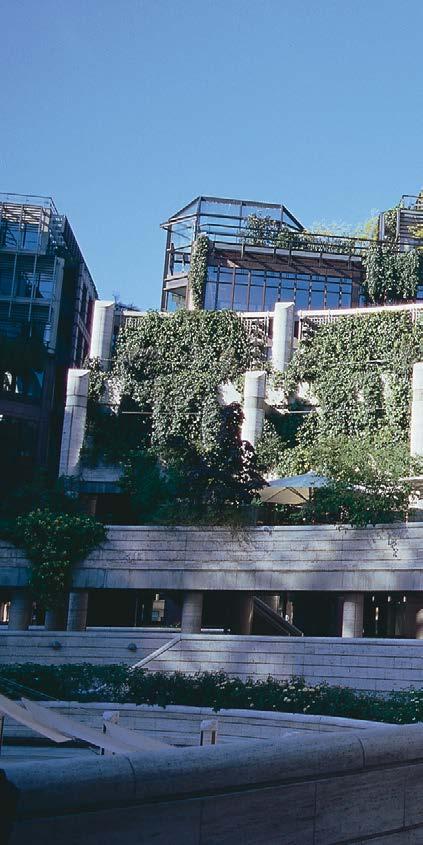
In addition to offering a wide range of standard products, Wade designs and manufactures custom made products to suit particular applications.
Recent projects include banks, hospitals, hotels, laboratories, leisure centres, municipal buildings, museums, private residences and sports arenas.
Availability of faceted and curved channel systems extends choice for specifiers.
Stainless steel channel with nickel bronze grating, Broadgate, City of London
Nickel bronze is equally suitable for inside or outside applications. Aesthetic yet practical nickel bronze complements a wide variety of floor finishes including terrazzo, York stone paviors, marble and sheet floor covering.

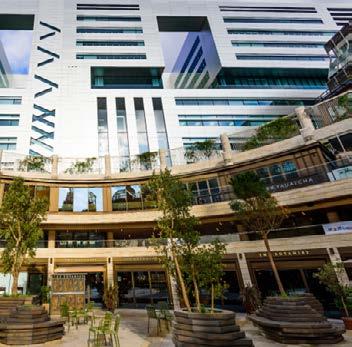

Typical installation in a vinyl covered floor SN12230 grating with SVFB channel. Channel profile SVF ensures watertight connection when used with flexible sheet material such as vinyl flooring. Suffix ‘B’ on channel Spec. Code denotes filter bucket.
Curved NE profile stainless steel channel with curved perforated stainless steel gratings combine function with design.
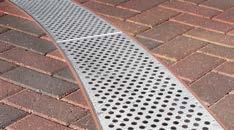
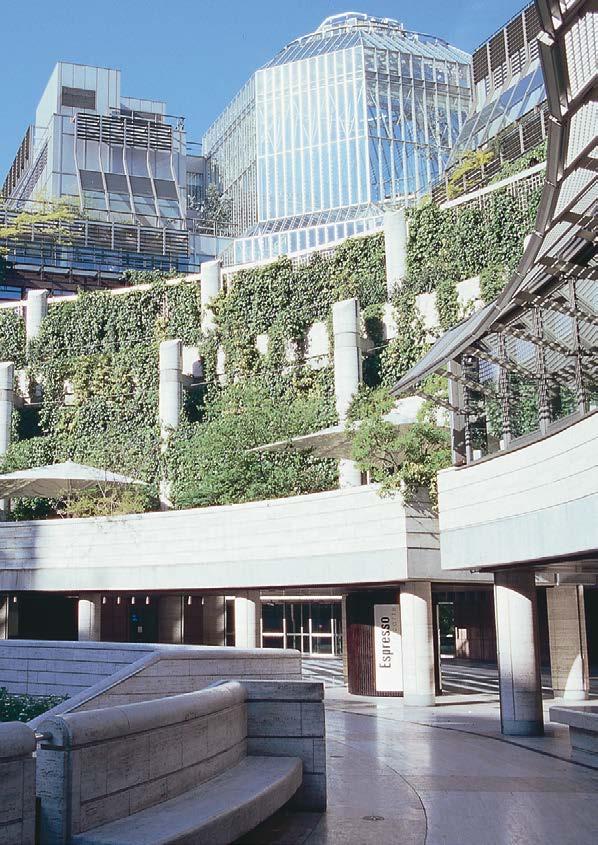
Supaslot channel with integral central gully
The facility to incorporate gullies into linear channel increases options for drainage layout.

Anti-slip mesh grating in a trolley wash-down area
Manufacturing versatility for gratings and channel enable custom designed drainage areas to be readily produced.


Wash-down area gratings combined with Supaslot channel and integral stainless steel side inlet gully
Attention to detail is a hallmark of Wade design and manufacture.

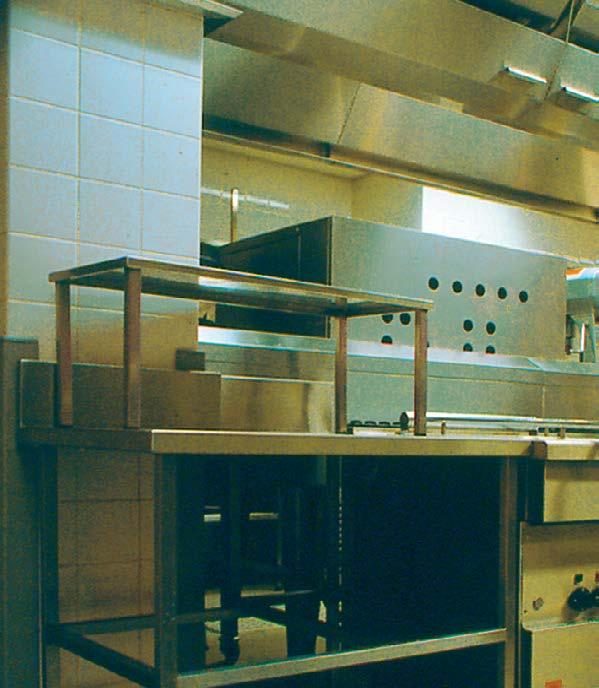
Double notched anti-slip mesh gratings of stainless steel in a tiled floor
Channel profiles and gratings are available to suit all kinds of floor construction and flooring materials.

Heavy duty bar grating designed for trolley wheel-loading
Stainless steel channel and grating meet the high standards of hygiene demanded in todays working environments.

Process area tray with grating and integral channel
Custom designed channel and grating provide cost effective drainage and a safer working environment.
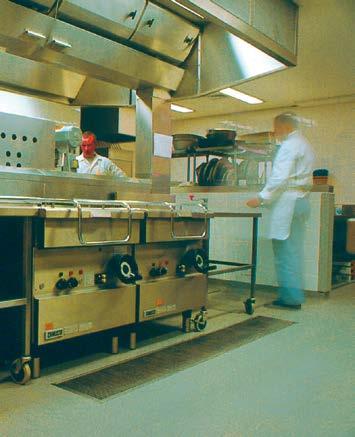
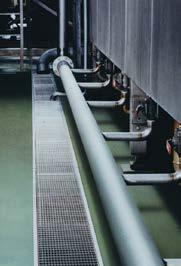
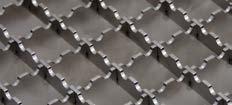
Double notched anti-slip grating
In areas where high volumes of water may be discharged, anti-slip gratings with generous free area provide extra safety for personnel.

Wash-down channel tray and Supaslot channel with integral stainless steel gully Stainless steel gullies with side inlets when used with channel drainage eliminate the need for separate drain runs.
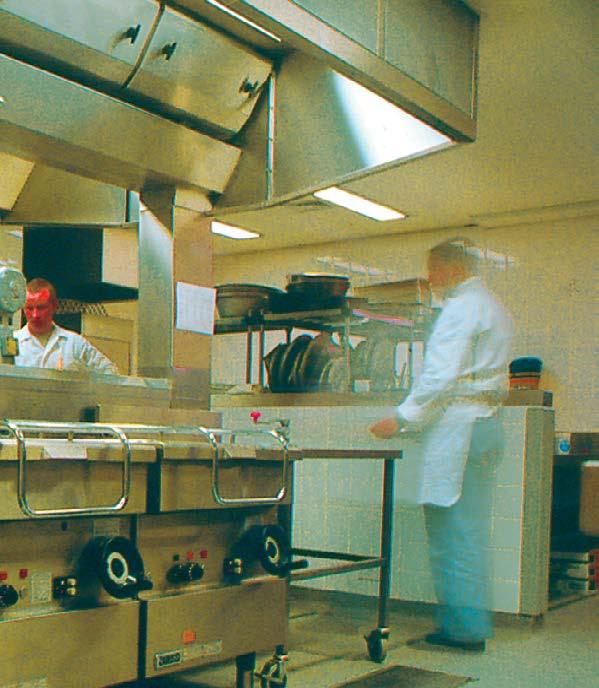
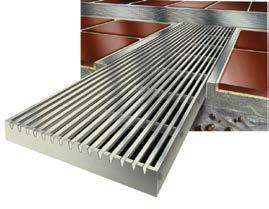
Heavy duty plain mesh grating for high volume areas
Standard and custom made grating and channel are available to withstand the arduous conditions often experienced in industrial processing.
Reverse wedge profile of Streamline stainless steel grating reduces incidence of blockages.
Shown below are some typical installations; there are many other permutations. Please refer to the following pages to select the grating, channel profile and options.
NE channel and SS5135B5 grating, shown with Q21 style 2” BSP horizontal side outlet and U1404 removable bottle trap.
NEF channel and SS7300A5 grating with Q14 style dropped sump and U1704 removable bell trap.
RP channel and SN12230 grating, with G304LD ‘P’ trapped body (supplied with channel sealing kit).
RE channel and SS3135A5 grating with D1004 non-trapped body and C.D10LW membrane clamping collar.
SVF channel and SS40135A1 grating, spaced away from wall, vinyl dressed both sides.
SVFT channel (SVF with optional tile upstand) and SS40135A1 grating.
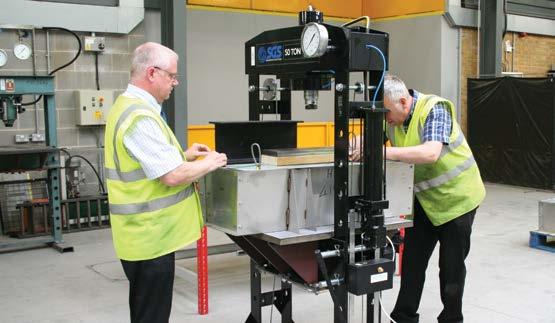
Standard channel and gratings shown in the following pages have been type-tested under the supervision of BSI (British Standards Institution) and conform to BS EN 1433.
Given the enormous quantity of possible grating sizes combined with different load bars that deliver different load classes, it is not practicable or economic to have third party certification for every custom-made grating. Accordingly, Wade has its own testing facilities at Halstead to enable testing, as laid down in BS EN 1433, and the application of CE status to the items that conform.
In response to customer demand, Wade manufactures some gratings that do not conform to BS EN 1433. These are not defective in any way, but, for example, some customers require gratings for pedestrian areas with a slot width of 4mm, whereas BS EN 1433 sets a minimum slot width of 5mm in such places. In these cases the gratings are tested by Wade and the CE mark is applied to denote the essential requirements are met. Only one such grating is illustrated in this catalogue –SN23130.
Sizes stated are nominal, not precise measurements, as gratings are manufactured to fit the ordered channel or angle frame with allowance to enable removal of gratings. Stainless steel gratings are made to length; where multiple cast gratings do not fit the channel one or more gratings are cut to length.
Grating load class per BS EN 1433
Load class is when installed in channel of the same or higher load class in accordance with Wade installation instructions; see pages 24 and 27.
Grating availability/delivery
Standard versions, shown in the following pages, are generally available ex stock; other sizes can be made to order. Gratings are fitted into the ordered channel or angle frame at our factory and are so delivered. Gratings may not always be interchangeable, so it is good practice to return to original position in the length of channel/angle frame.
Secured gratings
As standard, gratings are lain loose in channel or angle frame. As an option, gratings may be secured (locked) to the channel or angle frame – add suffix ‘L’ to the grating Spec. Code. Pin-Torx or Pin-Hex screws are fitted on all locked gratings, making them suitable for security applications.
For use with channel shown on pages 16–17, 21 and angle frame on page 25.
Streamline Reverse wedge profile reduces incidence of blocked gratings. Suited for pedestrian areas, including barefoot zones, while providing an effective barrier at thresholds. Streamline is available up to 400mm wide at an A15 load class (POA)
*Aperture width reduced to 13mm on long edges.
Anti-slip mesh Double notched bars make this grating suited for wet or greasy floors such as at abattoirs and in catering, food processing and pharmaceutical industries. Anti-slip mesh is available up to 750mm wide at an A15 load class (POA)
*Aperture width reduced to 13mm on long edges.
Options
Accessories – see page 28.
Gratings of other styles and sizes – contact our Technical Services Department with details of your requirement.
Secured – add suffix ‘L’ to the grating Spec. Code – see note on page 9.
Stainless steel grade 316 – add suffix ‘M’ to the grating Spec. Code (not generally available ex stock).
Did You Know?
Wade linear gratings come in width sizes other than those shown in our catalogue/website.
• Streamline – Can be manufactured up to 399mm wide (A15 Load Class).
• Mesh - Can be manufactured up to 900mm wide (B125 Load Class).
• Perforated – Can be manufactured up to 192mm wide (A15 Load Class).
• Bar - Can be manufactured up to 450mm wide (D400 Load Class).
Custom made gratings & channels can also be supplied to clients’ own designs
Laser etching of customer designed logo can also be added (CAD file required).
Contact the Technical Services Department to discuss details of your requirements:
wadetech@alumascwms.co.uk
• For use in shower areas, balconies & low usage foot traffic areas
• To be used in conjunction with Linear Drainage Channel
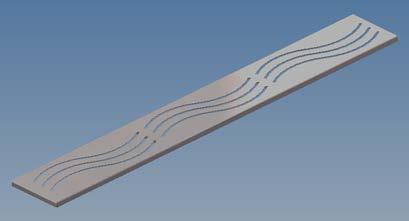
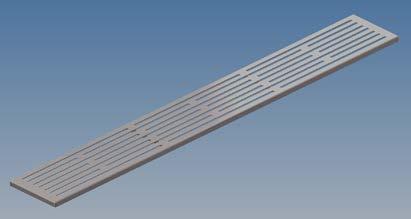

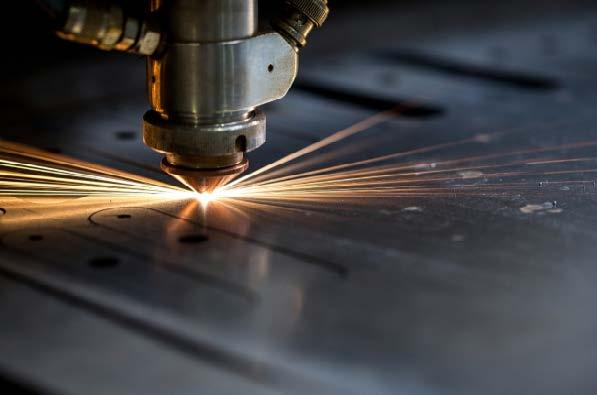


• Inhouse UK manufacture
• A choice of design options
• A choice of materials and finishes
• Comprehensive internal and external Technical support
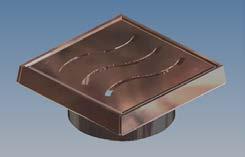
Slot Vari Level Grating
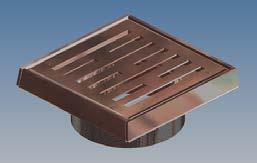
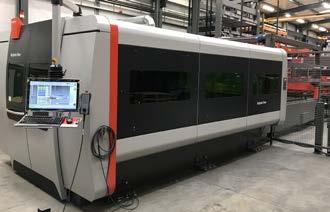


Note: These products conform to BSEN1253
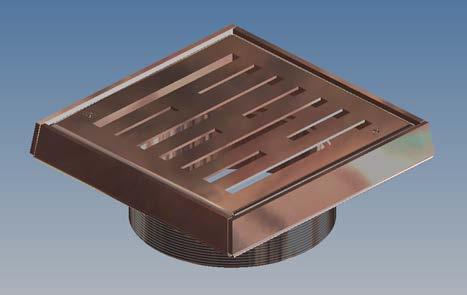
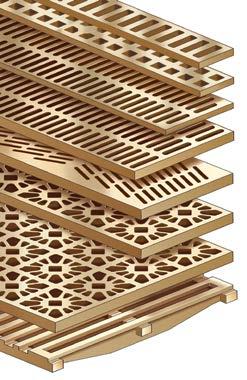
For use with channel shown on pages 16–17, 21 and angle frame on page 25.
Durable high quality gratings particularly suited to areas subject to a high volume of pedestrian traffic. Standard aperture
SN23130 does not conform with BS EN 1433 because the slot size of 4mm is below the minimum of 5mm set in the standard. The grating conforms with CE regulations and bears the CE mark. Decorative
Gratings for use in low priority pedestrian areas. Standard aperture
For use with channel shown on pages 16–17, 21 and angle frame on page 25.
Robust durable gratings for use in service areas, plant areas and for restoration or refurbishment projects to match period architecture.
Sherardized cast iron – BS EN 1561









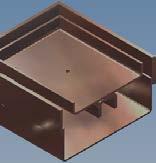
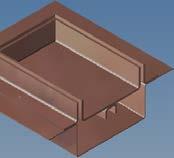
Spec. Code: NE
Load Class: B125
Show edge = 3mm
Spec. Code: NEHD
Load Class: C250
Show edge = 3mm
Spec. Code: NEF
Load Class: C250
Show edge = 3mm
Flange = 50mm
Spec. Code: RP
Load Class: C250
Show flange = 10mm
Spec. Code: RE
Load Class: C250
Show flange = 25mm
Spec. Code: SVF
Load Class: A15
Show flange = 15mm
Spec. Code: SVFE
Load Class: A15
Show flange = 15mm
Fixing flange = 50mm
Spec. Code: RPV
Load class: C250
Show flange = 27mm
Channel is available in a range of profiles, shown and described below, generally with in-built fall towards the outlets. Side bars and folds are made so that the selected grating fits flush with the show edges. Load class is when installed with grating of same or higher class in accordance with Wade installation guidelines, see pages 26 and 27.
A - Narrow edge
Narrow show edge, suitable for most standard applications, provides a floor finish abutment face; can be produced as a curved channel with any of the perforated gratings listed on page 10, (see example on page 5).
B - Narrow edge, heavy duty
Not suitable for hygiene environments. Load class D400 is also available, with 5mm wide show edge – add suffix D400 to Spec. Code.
C - Narrow edge, flanged
Not suitable for hygiene environments. Load class A15 in timber deck. Narrow show edge provides a floor finish abutment face. Extended flange enables dressing a membrane and/or fixing to a timber deck (Fixing holes are available on request). When specifying/ordering please advise the required flange depth.
D - Regular profile
Suitable for most standard applications. Load class D400 also available (2mm channel thickness) – add suffix D400 to Spec. Code.
E - Return edge
Additional fold provides extra stability to channel edge and a floor finish abutment face. Load class D400 also available (2mm channel thickness) – add suffix D400 to Spec. Code.
A support bar is recommended in C250 and D400 applications.
F - For use with vinyl and other flexible sheet material
Stainless steel clamp ensures watertight connection, access to channel and outlet is easily achieved without disturbing the floor covering. Minimum grating width required = 80mm.
G - For use with vinyl and other flexible sheet material
Has an extended flange with fixing holes, for use in timber deck.
H -For use with flexible sheet floor covering in heavy duty environments profile RP is available with a factory fitted, PVC angle edging strip to which sheet floor covering can be buttwelded at the time of installation; such channels are particularly suited to heavy duty applications.
Note: Suitable only for channels with grating of minimum 30mm depth.
Spec. Code: PS
Load class: A15
Show edge = 3mm
Spec. Code: PSF
Load class: A15
Show edge = 3mm
Note: For optional tile upstand, add suffix ‘T’, see page 10.
Continuous perimeter slot drainage, suitable for shower areas. Internal tray can be removed for easy cleaning (not suitable for vinyl floors). Option: Specify depth of recessed tray to suit specified floor finish
J - Peripheral Flange Slot
Extended flange enables dressing a membrane and/or fixing to timber deck (Fixing holes are available on request).
Options:
Specify depth of recessed tray to suit specified floor finish. Specify depth of membrane/support flange.
K - Top of Gully 200mm Square
Options: With (shown) or Without membrane/support flange
Trapped or Non-trapped
Horizontal (shown) or Vertical outlet
Outlet size to suit specified pipework
Spec. Code: PSG
Load class: L15
Show edge = 3mm

For use with gratings shown on pages 12–14.
Typical straight channel – key dimensions
SVF profile shown, also applicable to all profiles illustrated opposite.
B (Outlet position)
(Visible length at FFL)
Accessories
Push-in removable bottle trap, filter bucket and other accessories detailed on page 28.
Dropped sump – to help improve drainage or allow an optional large stainless steel filter bucket/removable trap.
See page 20 for details.
Dual-level drainage – enables secondary drainage at membrane
(Channel depth at ends; minimum = grating depth + 15mm SVF + SVFE + 20mm)
D (Channel depth at outlet)
E (Outlet spigot length)
(Size/type of pipework connection)
To suit particular applications channel can be custom made in grade 304 or 316, with or without fall, with a combination of different profiles, on the same or opposite side, with non standard profiles including deep invert, ‘V’ bottom and heavy duty versions. Please contact our Technical Services Department for details.
Design considerations
When positioning channel adjacent to wall, ensure adequate allowance is made between channel and wall to cater for flooring manufacturer’s edging detail.
Access covers with linear drainage
Solid access covers may be fitted in channels where required, e.g. areas where a channel runs beneath equipment or walls. Covers may be secured or non-secured and may be recessed to accept flooring material where depth is sufficient.
Threshold drainage
Linear drainage channels provide an ideal solution to the problem of protecting building thresholds from the ingress of surface water. All of the channel profiles shown within this catalogue can be manufactured to suit specific requirements, with slots or gratings at surface level; Wade ‘Streamline’ gratings are particularly suited to this application. Also see pages 22 and 23.
Note: If a channel has more than one outlet and gullies are to be pre-installed, then accurate dimensions must be established. Where possible, gullies should be cast-in using the channel assembly to determine positions.
level. See page 19 for details. Add suffix SSD, DSD (single or double). channel depth below ssd/dsd flange to be minimum 40mm deep.
Grade 316 stainless steel – for increased corrosion resistance – add suffix ‘M’ to channel Spec. Code.
Gully body – see Outlets page 18–19.
As well as connecting directly to pipework, stainless steel drainage channel may also be used with Wade Floor Gullies, trapped or untrapped as illustrated on page 10 and 18.
Support bar – a solid stainless steel support bar helps prevent deformation or movement of channel show flange in heavy load bearing areas. To specify/order – add suffix ‘S’ to the channel Spec. Code. (May be used with channel profiles: RP, RE or RPV).
Tile upstand – for tiling over, or for use with other finishes and/or membrane where channel is being installed close to a tiled wall, (see illustration on page 8) 70mm high unless otherwise specified. Add suffix ‘T’.
To obtain a quotation, please provide the following:
Grating Spec. Code
Channel profile Spec. Code, followed by any required option suffix(es) (see below)
General dimensions in mm (A to E above) and layout of channel.
Outlet connection details (F above – size/type of pipework system)
Thickness of floor finish (where applicable)
Gully body Spec. Code or Dropped sump style (if required)
Options/Accessories Spec. Code (if required)
Note: Adjustable feet available on request - for further information, contact the Wade technical departmentwadetech@alumascwms.co.uk
These can take different forms as described below. Direct
Channel is available with welded-on outlet(s) for connecting directly to pipework. Outlets are generally vertical from the base but can be horizontal from the side or end. Spigot outlets (plain pipe 110mm o.d.) have standard length of 90mm. Longer spigots are available, max. 950mm, are supplied with standard outside diameter of 114 mm for connection to pipework with a coupling.
Outlets smaller than 75mm/3" are generally supplied as a female BSP threaded socket for connection to pipework having a male threaded pipework adaptor.
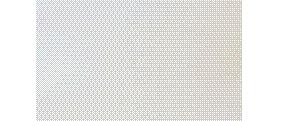
Channel is made with a welded-on outlet, as above, that is push fitted into the body on site when the channel sealing kit is in position. Approximately 10mm of height adjustability is available. The collar can also be used to clamp a membrane if used. Illustrated is a selection of bodies regularly used with linear drainage.

installation

SVF channel and SS7300A5 grating, vinyl dressed both sides, with G304LD ‘P’ trapped body (supplied with channel sealing kit).
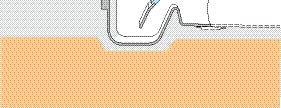
Trapped – Stainless steel grade 304 (for grade 316 add suffix ‘M’ to Spec. Code)
QG114LD Vertical outlet (BS 416) – bell trapped
QG214LD Horizontal outlet (BS 416) – ‘P’ trapped
Non-trapped – Stainless steel grade 304 (for grade 316 add suffix ‘M’ to Spec. Code)
Gully body for use with bituminous membrane Non-trapped – Cast iron
Membrane clamping collar is required, C.D10LW with weepholes. Channel sealing kit is not applicable to D10–D12 series gully bodies.
Channel for the profiles illustrated on page 14 is available with a dropped sump welded to the channel base to help improve drainage and to allow an optional large stainless steel filter bucket and/or fitting of a removable trap. Note: Minimum channel base width to be equal or greater than the trapped sump top dimension.
Filter basket – made of stainless steel – add suffix ‘B’ to Spec. Code (not Q21 or Q22 style).
Grade 316 stainless steel – for increased corrosion resistance –add suffix ‘M’ to Spec. Code.
Size
Q27DS and Q28DS are as dimensioned on this page.
Q10, Q12, Q13, Q14, Q21 and Q22 style dropped sumps are made to order, though the width of the grating (min. 200mm wide for Q10-Q14, min. 135mm wide for Q21 and Q22) in the channel above is a defining factor. Generally, it is more cost effective to increase the width of the entire channel and grating to match the sump as opposed to boxing out.
Trap – provided as standard; add suffix ‘N’ for non-trapped version (vertical outlet versions only).
Typical installations
Provides primary drainage at finished floor level plus secondary drainage at membrane level. Suitable for installation in pedestrian and light vehicular areas only.
Secondary drainage is available with the channel profiles shown on pages 16 and 22, for use with gratings shown on pages 10 – 13.
Load class: A15
To specify/order:
Grating Spec. Code
Channel profile Spec. Code
Secondary drainage Spec. Code (SSD or DSD)
General dimensions in mm and layout of channel Outlet connection details
Membrane depth from finished floor level
Gully body Spec. Code or dropped sump style (if required)
Accessories Spec. Code (if required)
(Select from page 10 –13)
Single secondary drainage (SSD) with channel profile NE
Geo-textile membrane
Drainage slots
Grating (Select from page 10 – 13)
Geo-textile membrane
Drainage slots
Sand/bedding Pavior Membrane Geo-textile membrane
Double secondary drainage (DSD) with channel profile NE
Suited for draining large areas of screed, resin and other floor finishes, as well as block paving, hidden channel can be designed to accommodate a range of paving thicknesses and flow rate requirements. Available in a range of profiles, shown and described below, generally with in-built fall towards the outlets; can also be produced as curved channel.
Spec. Code: HC
Spec. Code: HSC
With non-removable toe bar. 6mm slot width suitable for use in barefoot areas.
Depth – channels are available with level invert or in-built fall to outlet, from a minimum of 40mm deep. The base of the channel is flat for depth up to 110mm, deeper versions have a “V” shaped base.
installation
HC channel with integral stainless steel gully. (Recessed cover shown; can also be supplied with a grating if required).
Spec. Code: HCE
Designed for use against a wall.
Covers are also available with spigot upstand for connection to rainwater pipework.
Spec. Code: HSCE
Designed for use against a wall. With non-removable toe bar. 6mm slot width suitable for use in barefoot areas.
Rodding access – 140mm square access covers are fitted over the outlets, as standard; these may be recessed to accept flooring material.
Load class: A15 (depth ‘A’ < 75mm)
B125 (depth ‘A’ > 75mm)
Options – see pages 17 and 21.
To specify/order: Channel
Code: HC. HSC, HCE or HSCE
depth and layout of channel
and type of outlet(s)

HCE channel with 140mm square access cover.
To help protect a building threshold from ingress/ponding of rainwater landing on an external door, the specially formed channel is installed, generally, 10mm away from the door cill, this gap being the path for rainwater to flow into the hidden channel below. The channel also has facility to receive run-off from a sub-cill and/or from the damp proof course/ membrane that must be dressed into the channel.






Spec. Code: TDN













Grade 316 stainless steel – add suffix ‘M’ to the channel Spec. Code
















Spec. Code: TDR with 50mm show face






Outlet – 2” BSP with T1702 ABS adaptor to 50mm plastic pipe supplied as standard. Larger outlets may be specified.
Recessed access cover – 76mm square c/w lifting bosses over outlet.
To specify – quote Spec. Code: TDN or TDR.
To obtain a quotation, please provide the following:
Spec. Code: TDN or TDR
Overall length – in mm, and layout of channel
Outlet – quantity on each run
Access cover – quantity (generally one over each outlet).
The following additional information will be required to process an order:
Dimensions A-D in mm
Outlet/recessed access cover positions along each run
Outlet type (horizontal or vertical)
Level or in-built falls to base of channel.












Sub-cill and/or membrane dressed into channel























Supaslot channels are suited for large areas with only low volumes of waste water such as in abattoirs, butcheries, dairies, breweries etc. Neat and unobtrusive, the channels are a popular choice as a barrier between designated wet and dry zones, such as between dishwashing and cooking areas of a kitchen.
Spec. Code: SL
Spec. Code: SSL
With non-removable toe bar. 6mm slot width suitable for use in barefoot areas
Features
• depth from 65mm to 180mm with or without fall
• suitable for tiled and resin floors
• easily cleaned by directing jet of water along the channel towards the outlet
• can be combined with Wade gullies and channel gratings
Load class: B125
Typical installation
Spec. Code: HL
Designed for use against a wall
To specify/order:
Spec. Code SL, SSL or HL, length, depth and layout of channel, position and diameter of outlet.

Grade 316 stainless steel – for increased corrosion resistance – add suffix ‘M’ to channel Spec. Code.
To special order, stainless steel gullies can be welded anywhere along the channel. Gullies may be trapped (‘P’ or bell) if required.
Support bar – a solid stainless steel support bar helps prevent deformation or movement of channel show flange in heavy load bearing areas. To specify/order – add suffix ‘S’ to the channel Spec. Code.
Please contact our Technical Services Department for details.
SL Channel with integral stainless steel gully. (Gully grating omitted for clarity, can also be supplied with a recessed cover if required).
Channel and grating for fire-fighting lift –stainless steel grade 304, (min.) 1.5mm thickness channel
To prevent water, such as from a sprinkler, entering a lift well.
Features
• channel has two 150mm outlets in corner locations, to deal with flow of 25 l/s in accordance with BS 9999
• ‘streamline’ gratings are secured in the channel leaving a peripheral slot 10mm wide
Load class: A15
Peripheral slot helps prevent water bridging the grating
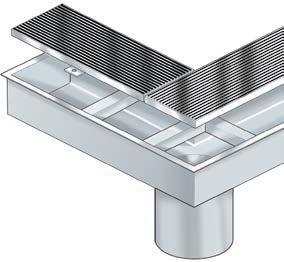
To specify/order:
Spec. Code S4800 and lengths and layout of channel (include details of outlet positions)
Angle frame
stainless steel grade 304, 3mm thickness Curved channel
For use over pre-formed channels, with gratings shown on pages 10 to 13.
Angle frame can be custom made to suit various applications; sections can be produced to match channel profiles shown on page 16 and in grade 316.
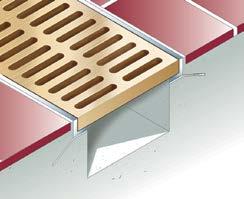
Basic angle frame (matching channel profile NE) can also be produced in curved sections with any of the perforated gratings listed on page 10.
Profile NE, narrow edge, can be produced as a curved channel with any of the perforated gratings listed on page 10.
Profiles HC, HSC, HCE, and HSCE, hidden channel, is also available curved.
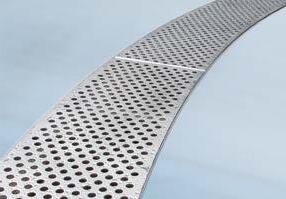
This is general information only, when installing in concrete. Channel-specific instructions are supplied with the goods for use by the installer and are also available from our Technical Services Department and our website.
A. Drainage channel
1. Remove any gratings and clamping frames from channel.
2. Taking care not to twist, turn the channel upside down (base uppermost).
3. If there is more than one section to the channel, apply silicone sealant to jointing flange faces and securely bolt sections together. Rubber gaskets can be supplied to order.
4. If connecting to a Wade gully, follow the instructions supplied.
5. Taking care not to twist, turn the channel the correct way up and lower it into the trench and into any installed gullies: ensure top edge of channel is flush with finished floor level, use the adjustment legs when supplied.
6. Bend the build-in ties as necessary.
7. Make the pipework joints below the channel.
8. lf not supplied, provide and insert spacer bars across channel at approx. 500mm centres. Spacer bars prevent channel being squeezed while backfill is being compacted and must not be removed until backfill is set.
9. Fix the channel into position by first grouting build-in ties and any adjustment legs firmly in place.



Note
After positioning the channel it is recommended that a water test be undertaken to check that height is correct, that, where applicable, the fall in the channel works effectively, that there are no leakages from the channel system and that there are no signs of deformation or of damage to the channel which may have occurred during installation. At this stage it may still be possible for any necessary rectification work to take place. Please consult our Technical Services Department if this situation arises.

10. Taking care not to damage show surfaces, place heavy weights on top of the channel prior to pouring backfill to prevent any lift or movement.
11. Using concrete class C30/37 backfill around the channel ensuring that the concrete flows evenly under and around the channel such that no voids are formed.

12. Remove immediately any material which falls into the channel.
13. When concrete is set, remove spacer bars.
14. Fit gratings.
15. Clean channels and gratings with water and a suitable cleaning agent where necessary. Under no circumstances use metal scouring pads or wire wool as these will contaminate surfaces.
Note
Load classes given are based on channel being set in concrete class C30/37, to a level that fully supports the grating seat. For a lower load rating, lesser amounts and class of concrete may be suitable – consult a structural engineer if advice is needed.
For additional notes on channel profile SVF and channel with perimeter angle frame, see B and C.
B. Drainage Channel profile
SVF – for use with vinyl and other flexible sheet material
The following additional notes/ procedures apply:
1. Dress vinyl into channel and fix in accordance with flooring manufacturer’s instructions.
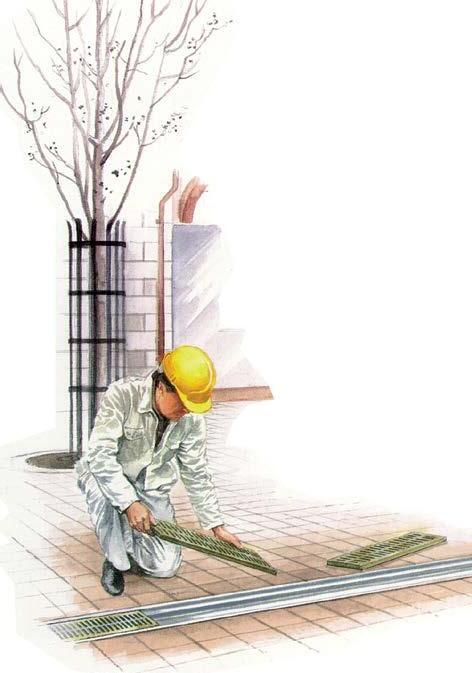
2. Fit clamping frames and gratings.
C. Drainage channels with perimeter angle frame
The following additional notes procedures apply:
1. When the channel is installed, lay the floor into the perimeter angle frame.
2. Once the floor is set, carefully remove the spacer bars between the angle frame and the channel using an angle grinder or similar.
Note
Do not remove the spacer bars before fitting the channel, as it would then be impossible to maintain the position of the frame relative to the channel.
3. Thoroughly clean the gap between the channel and angle frame, degrease and fill with a permanently elastic expansion joint sealant. If corrosive chemicals are likely to be present, consult sealant manufacturer on suitability.
Filter bucket (Nylon 6)
To fit inside 4" channel outlet (typical installation page 5), a nylon filter bucket is a means of collecting solids. The bucket needs to be cleaned out periodically. To specify/order – add suffix ‘B’ to the channel Spec. Code.
U1404 Removable bottle trap (Nylon 6, silicone rubber)
To fit inside 4” channel outlet. Typical installation is shown on page 8. Max flow rate 1 l/s.
Note:
Frequent cleaning will be necessary in applications where very high amounts of hair and other waste material are present.
U1704 Removable bell trap (polypropylene)
Channel will be designed with a sump (min. 200x200x200) at the outlet to accommodate this trap – cannot be used with narrow gratings (less than 200mm).
UX9901 plug (LDPE)
Tapered to plug, temporarily, 100mm inlet or outlet during installation.
U1203 Portable funnel
To accept discharge from boiling pans etc; for use with any grating modified to suit. Please specify grating.
20295017 Lifting Tool for SS Channel Gratings

To lift the top grate from the channel, we recommend using a Lifting Tool for ease of access.
Materials and finish of Wade gratings and channel, described below, are selected to provide lasting performance and to blend with surroundings. The products require the minimum of maintenance, but periodic inspection should be carried out to ensure absence of matter which could impede drainage. Measures set out below will sustain appearance and prolong service life.
Cast aluminium – BS EN 1706
Used for gratings
An alloy chosen for its chemical resistance and durability.
Cast iron – BS EN 1561
Used for gratings and gullies
A widely used metal in the drainage industry, its resistance to corrosion permits extended use under extreme conditions. Castings are coated with a high grade lacquer paint, applied by full immersion dip, to provide internal and external surface coverage. Paint will gradually wear off and is replaceable; oxidisation (surface rusting) is a natural process which does not weaken the material. A zinc anti-corrosion coating is applied to certain castings by sherardizing.
Ductile iron – BS EN 1563 and 1564
Used for gratings
A casting with the ductility of steel, yet with more than twice the tensile strength of cast iron. A zinc anti-corrosion coating is applied by sherardizing.
Neoprene
Used for gaskets and seals. Maximum continuous operating temperature of 100°C.
Nickel bronze – BS EN 1982 satin finish
Used for gratings
A cast alloy with a fine grain effect which blends well with most floor finishes. The satin finish is generally maintained
This catalogue shows the load rating class for each product based on BS EN 1433 as follows:
A15 Areas which can be used only by pedestrians and pedal cyclists.
B125 Footways, pedestrian and comparable areas, private car parks and car parking decks.
C250 Kerbsides – maximum of 0.5 m into the carriage way and a maximum of 0.2m into the footway.
D400 Carriageways of roads (including pedestrian streets), hard shoulders and parking areas, for all types of road vehicles.
Channel load ratings are as tested when cast in concrete grade C30/37 up to finished floor level. Channels installed in other types of floor construction may not meet the same load class if they are not fully supported.
Where grating and channel within an assembly are different load classes the lower class is applicable to that assembly.
by the slight abrasive action of passing traffic. In unused areas the material will gradually tarnish. To restore lustre, apply a plain nylon scouring pad (not soap-filled) in the direction of the grain.
Nylon 6
Used for filter bucket and removable bottle trap
Chosen for its toughness and durability. Maximum continuous operating temperature of 180°C.
Polypropylene
Used for the removable trap in stainless steel gullies. Maximum continuous operating temperature of 100°C.
Silicone rubber
Used in O-ring in removable bottle trap. Maximum continuous operating temperature of 180°C.
Stainless steel – grade 304 and 316
Used for bodies, channels, gratings, funnels, access covers, filter buckets and fixings
A corrosion-resistant metal containing significant amounts of nickel and chromium; AISI grade 304 stainless steel is used as standard, which is suitable for general use in and around buildings including most coastal locations. In applications such as swimming pools or having an aggressive atmosphere, grade 316 is recommended and is available on request. An even higher grade may be required for applications in highly corrosive environments including where exposure to seawater may be anticipated. Clean with soap and warm water rinse and wipe dry. Gratings may also be cleaned in certain dishwashers. Under no circumstances treat with metal scouring pads, metal scrapers or wire wool as these will contaminate surfaces leaving rust spots.
The selection of the appropriate class is the responsibility of the designer; where there is any doubt the stronger class should be used. Spec.
Angle Frame 25
D10/D11/D12 19
21
18 HC/HCE 22
24
HSC/HSCE 22
13
NE/NEF/NEHD 16
16
PS/PSF/PSG 16 QB 19 QG 19
Q27DS/Q28DS 20
20
16
16

